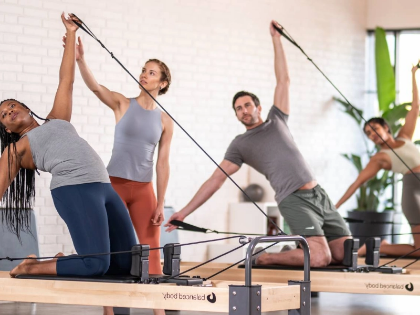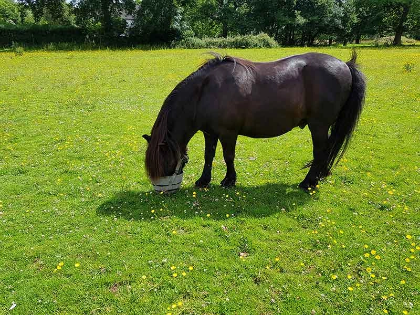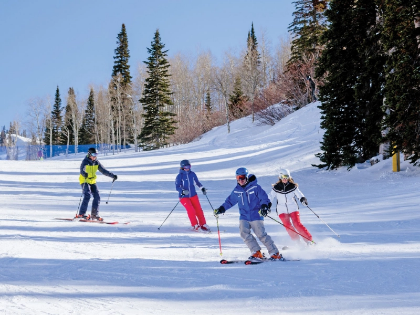Recognising Golf Club Bounce and Knowing When to Apply It
A chunked wedge is one of the most destructive strokes when it comes to chipping around the green. You may enhance your short game and bunker play by being aware of the bounce of your wedges and avoiding this common error. Selecting the appropriate bounce and grind is crucial for every wedge player. What bounce and grind work best for you should be determined by your angle of attack into the ball and the conditions of the turf.
Bounce: What Is It?

Low Bounce: What Is It?
 The grass conditions you usually play on and your swing type are two important considerations when selecting the right bounce for each wedge. A greater bounce option, such as Titleist Vokey wedges, may be preferred by players who frequently scoop shots or dig their wedges into the ground. The high bounce of these wedges helps the player stay above the turf and reduces digging into the ground.
A lower bounce option is more suited for players who prefer to sweep their wedges across the ground instead of taking a large divot; these players are more likely to land on the leading edge of the club before hitting the ball. Each wedge's bounce angle is mentioned next to the loft on its specification sheet. Low-bouncing wedges are often made to be utilised on firm turf and in sandy situations. These wedges' low bounce makes it possible for the sole to make more consistent contact with the ground while using less force.
The grass conditions you usually play on and your swing type are two important considerations when selecting the right bounce for each wedge. A greater bounce option, such as Titleist Vokey wedges, may be preferred by players who frequently scoop shots or dig their wedges into the ground. The high bounce of these wedges helps the player stay above the turf and reduces digging into the ground.
A lower bounce option is more suited for players who prefer to sweep their wedges across the ground instead of taking a large divot; these players are more likely to land on the leading edge of the club before hitting the ball. Each wedge's bounce angle is mentioned next to the loft on its specification sheet. Low-bouncing wedges are often made to be utilised on firm turf and in sandy situations. These wedges' low bounce makes it possible for the sole to make more consistent contact with the ground while using less force.
Mid Bounce: What Is It?
 A wedge with extra bounce might be advantageous if you pitch and chip from very shallow angles or play a lot of tight lies on fast, firm ground. This is so that the club's leading edge won't sever the grass or sand due to a higher bounce.
It's crucial to take into account not just the bounce but also the kind of turf and sand you usually play on. You should take into consideration a mid-bounce wedge that is adaptable enough to handle most conditions if you play on courses with a combination of firm and soft turf.
Although bounce and grind are independent variables that affect a wedge's performance, they combine to provide you with the best opportunity for reliable contact and control. See a PING Certified Fitter for an evaluation of your swing dynamics and the typical course circumstances where you play to find out which wedges are right for you.
A wedge with extra bounce might be advantageous if you pitch and chip from very shallow angles or play a lot of tight lies on fast, firm ground. This is so that the club's leading edge won't sever the grass or sand due to a higher bounce.
It's crucial to take into account not just the bounce but also the kind of turf and sand you usually play on. You should take into consideration a mid-bounce wedge that is adaptable enough to handle most conditions if you play on courses with a combination of firm and soft turf.
Although bounce and grind are independent variables that affect a wedge's performance, they combine to provide you with the best opportunity for reliable contact and control. See a PING Certified Fitter for an evaluation of your swing dynamics and the typical course circumstances where you play to find out which wedges are right for you.
High Bounce: What Is It?
 Bob Vokey, the legendary wedge builder, once stated, "Bounce is your friend." More than almost any other factor in your bag, knowing what bounce is and when to use it can improve your short game.
The angle at which the sole of your club strikes the ground is known as bounce. When you hit the ball, the angled surface helps to prevent the leading edge from sank into the sand or turf.
Players who like to sweep their wedge shots and might not take a full divot are fitted with a higher bounce. It is also beneficial for shots out of bunkers with heavy or gritty sand.
When approaching the green from difficult lies, it might be much simpler to hit the ball close if your wedges have the proper bounce. You can cut strokes off your score by adjusting your wedges with the right bounce for your swing and the conditions of the course.
Bob Vokey, the legendary wedge builder, once stated, "Bounce is your friend." More than almost any other factor in your bag, knowing what bounce is and when to use it can improve your short game.
The angle at which the sole of your club strikes the ground is known as bounce. When you hit the ball, the angled surface helps to prevent the leading edge from sank into the sand or turf.
Players who like to sweep their wedge shots and might not take a full divot are fitted with a higher bounce. It is also beneficial for shots out of bunkers with heavy or gritty sand.
When approaching the green from difficult lies, it might be much simpler to hit the ball close if your wedges have the proper bounce. You can cut strokes off your score by adjusting your wedges with the right bounce for your swing and the conditions of the course.










